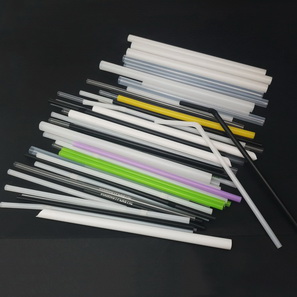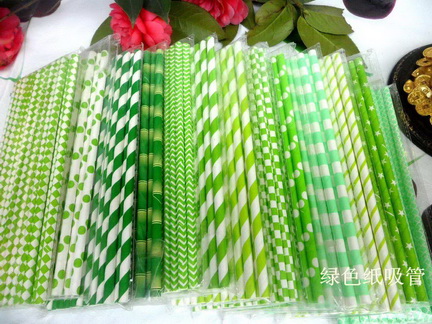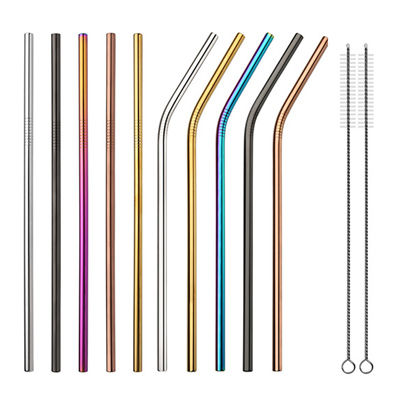PLASTIC, PLA, PAPER AND STEEL STRAWS – WHAT IS THE REAL DIFFERENCE?
The use of plastic straws has become one of the most hotly debated environmental issues around the world – and its impact has reached our shores with Canterbury’s largest town Rangiora recently launching a campaign to become New Zealand’s first straw-free town.
The global consumer movement targeting single-use plastic straws is completely justified.
Plastic straws are not recyclable and contribute significantly to manmade waste that ends up in landfill and litters our oceans. It is estimated that in New Zealand we use around 200 million plastic straws every year. In the United States, people use more than 500 million straws a day – that’s over 182 billion a year.
We are strong advocates for saying no to plastic by providing biodegradable and reusable straws. However, before we can change consumer behaviour, it’s important for people to understand the difference between common straw products and associated environmental impacts.
Plastic straws

Plastic straws have a short life-span as they are designed as a single-use product which we use to consume drinks before carelessly throwing them away.
It is a well-known fact that a single plastic straw can take up to 200 years to decompose. Even so, the negative environmental impact of plastic straws may come as a surprise given how small and thin the average straw is. Millions of straws end up in the ocean, where fish and marine mammals can ingest the plastic. Studies show that an estimated 71 per cent of seabirds and 30 per cent of turtles have plastic in their stomachs.
Plastic straws are made out of petroleum bi-product polypropylene, which is similar to the fuels we put into our cars. When straws begin to breakdown, they release harmful toxins that pollute the environment. When exposed to hot water or steam, plastic straws can easily melt and leak toxins.
To do your part to stop to the use of plastic straws is easy; don’t buy them in supermarkets and when ordering a drink, ask for a non-plastic straw.
PLA straws

PLA stands for polylactic acid which is made from renewable resources, such as sugarcane or corn starch. Naturally, one would assume that since PLA Straws are derived from natural ingredients that it would be better for the environment. However, this is not always the case and can often be misleading.
The issue with PLA straws is that people think they are buying an environmentally-friendly product. Although PLA is biodegradable, PLA straws and other PLA products become another form of plastic that will take years to breakdown in landfills and the ocean. PLA straws need to be composted under specific conditions and New Zealand does not yet have common facilities to compost PLA based products, forcing them to end up in landfills.
It is a common misconception that biodegradable PLA products are great alternatives to general plastic, however it is only great in theory as they still have a negative impact on the environment.
Paper straws

Paper straws are by far the most environmentally-friendly option. Paper straws breakdown quickly (they start to breakdown within three days if they end up in our oceans), and are compostable.
It is important however to research the brand or manufacturer before purchasing a paper straw product and check customer reviews.
There is a bit of controversy around paper straws as some brands use harmful chemicals when manufacturing the straw in order to overcome common complaints such as paper straws getting soggy too quickly or the colour of paper straws leaching into drinks. Paper straws are also slightly more expensive than the more commonly-used plastic straw, which are usually priced around $1.99 per bag in the supermarket.
However, if you buy better brands, such as those The Rubbish Whisperer sells, you will find that there was no need for plastic straws in the first place.
The Rubbish Whisperer only sells Aardvark-branded paper straws which are a suitable alternative to plastic because they quickly decompose and are user-friendly. Aardvark paper straws are 100 per cent Food and Drug Administration (FDA) and European Union (EU) approved, compostable with the ability to decompose in 30-60 days. They do not contain bees wax, are biodegradable and will not fall apart in your chilled drink. There is even a bendable paper straw option, which is great for hospital patients, people with physical disabilities and children.
While paper straws may cost a little more, the feel-good emotion you get from a refreshing drink will only get better when you know your straw won’t have a negative impact on the environment.
Stainless steel straws

Stainless steel straws are the way to go should you want to reduce plastic waste and help save the environment. Although the most expensive option when compared to its plastic and paper counterparts, you won’t have to buy another pack of straws again.
Stainless steel straws are made out of, as its name suggests, stainless steel. It’s the same material used to make common cutlery, so it is safe to use and chemical-free.
There are many reasons to use stainless steel straws, mostly because they are reusable and easy to clean, have a long-lifespan and are dishwasher safe. The Rubbish Whisperer sells its stainless steel straws with a custom-designed cleaning brush to effectively clean inside the straw and remove unwanted residue, which can be caused by fruit smoothies. Environmentally-friendly if it is continuously reused, and even better, passed on, stainless steel straws won’t impact the taste of the drink you’re consuming, look great at dinner parties, barbeques and events and they don’t create any more waste.
Contact: Ginger li
Phone: +8613275009387
Tel: +8613313990530
Add: Lumeng Road, Funan Economic Development Zone, Funan County, Fuyang City, Anhui Province Postal code: 236300